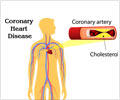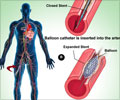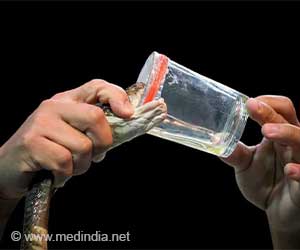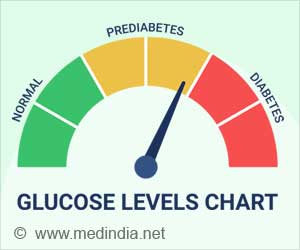Optical coherence elastography (OCE) can be utilized for nondestructive biomechanical characterization of myocardial infarction (MI) or heart attack.
- A high-resolution technique to assess tissue damage due to heart attack has been developed.
- This technique is called “optical coherence elastography” (OCE).
- It may also be used for assessing the effectiveness of heart attack therapies.
TOP INSIGHT
Optical coherence elastography (OCE) is a high-resolution technique that can be used to compare the mechanical properties of healthy tissue and tissue scarred by an induced heart attack. It may be used to evaluate the effectiveness of therapies aimed at reversing damage to heart tissue.
Regenerating heart tissue
Heart attacks occur when a blood clot prevents the coronary artery from delivering oxygen-rich blood to the heart. This blockage deprives the heart muscle of oxygen and within a short time causes permanent damage in the form of scarred tissue. This damage takes away energy from the beating heart and affects how well it can contract to pump blood.
"Experiments have shown that tissue from newborn mammalian hearts can completely regenerate, but with age this regeneration capability diminishes," said Larin. "Martin's group is working on ways to manipulate these molecular pathways in a way that stimulates the adult heart tissue to repair itself."
The researchers turned to OCE, a technique developed in Larin's lab, to see if it might be useful for observing how well experimental therapies worked in mouse models. OCE is based on the biomedical imaging technique optical coherence tomography (OCT), which can provide high-resolution images of the microstructures of tissue. However, rather than obtaining structural information, OCE uses the principles of OCT to create high-resolution maps of tissue mechanics.
OCE is ideal for observing the tissue mechanics in mouse hearts because it has the resolution necessary to detect whether the boundary between healthy and scarred tissue moves in response to therapy. Although other imaging modalities such as MRI or ultrasound can be used to examine tissue mechanics, they are better suited for large areas of tissue rather than a small, delicate mouse heart.
"Because of the small size and delicate nature of the mouse heart, we had to make special equipment to generate very small perturbations on the tissue," said Larin. "The pressure, timing and location of this applied force had to be very precise. The waves also had to have very small amplitudes, which was important for preserving the tissue."
The researchers tested their imaging approach in tissue samples from mice. After an induced heart attack, the mice developed scarring that would be similar to that caused by a heart attack in people. At six weeks, the researchers excised the hearts and used OCE to measure mechanical properties of the heart tissue.
The researchers saw that the damaged tissue showed decreased anisotropy - or directionally of the wave propagation - compared to healthy tissue. This observation indicated that the muscle fibers in the damaged area were more disorganized than healthy tissue. They also saw differences in tissue stiffness between healthy and damaged tissue using OCE.
"This is the first application of OCE for high-resolution mapping of muscle mechanical properties of the heart," said Larin. "We were able to see differences in the mechanical properties of normal heart tissue and areas with myocardial infarction. In the future, we want to use the technique to examine regenerated heart tissue to help us find a therapy that can benefit the millions of people worldwide who have experienced a heart attack."
References:
- Shang Wang, Manmohan Singh et al. Biomechanical Assessment of Myocardial Infarction using Optical Coherence Elastography, JournalBiomedical Optics Expresshttps://doi.org/10.1364/BOE.9.000728
Source-Eurekalert
 MEDINDIA
MEDINDIA





 Email
Email










